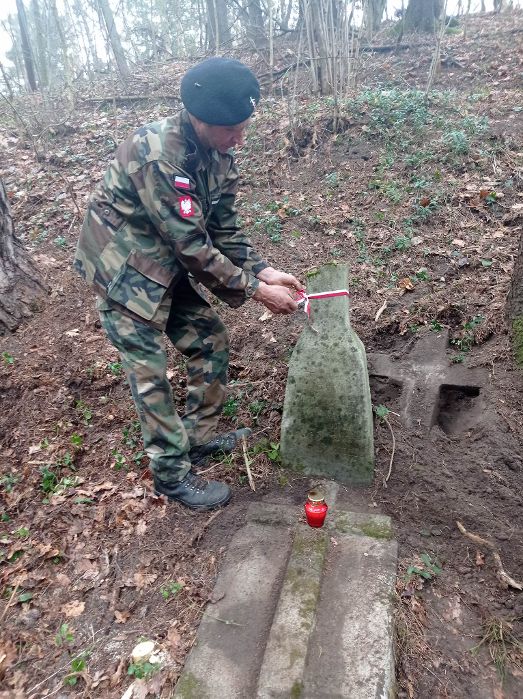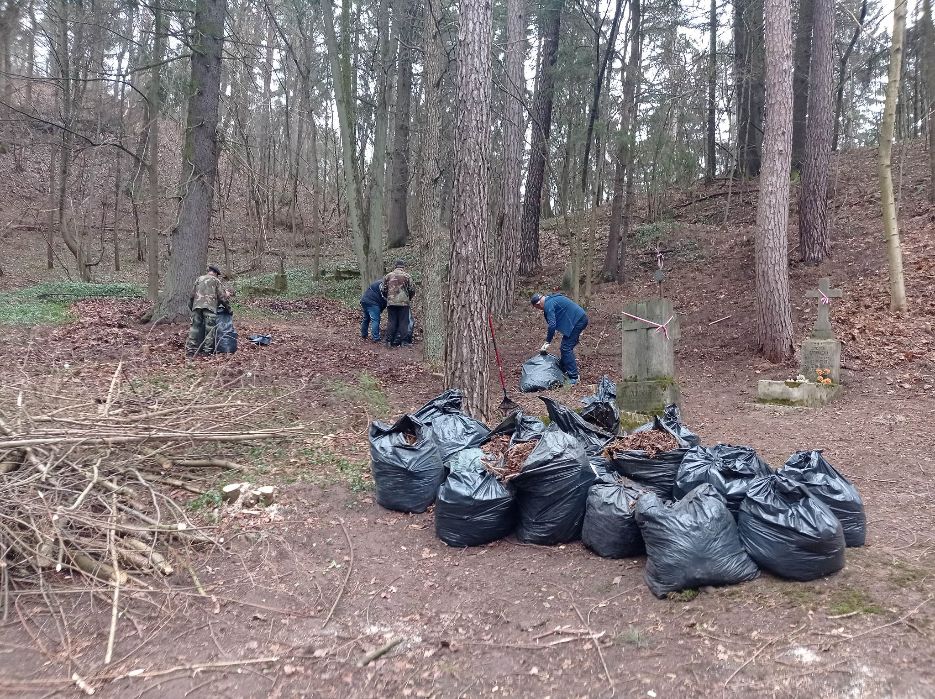
At the Antokol cemetery in Vilnius, a group of Poles is successively tidying up the neglected and forgotten quarters of the 4th Regiment of Zaniemen Uhlans. Polish youth also participate in the work. According to Andrzej Rosiński from the Facebook group “Poles in Vilnius”, a visit of specialists from the Institute of National Remembrance with equipment to search for burial places is planned for this year, as there are serious suspicions that there are definitely more graves than those on which tombstones have been placed.
“The initiative came quite unexpectedly, last year Mrs. Yvette Popławska from Brussels came to Vilnius, who organized a reading of Ballads and Romans by Adam Mickiewicz here in the Lithuanian Parliament, on this occasion she ‘infected’ me with the idea of taking care of the war quarters of Polish soldiers who died in the war with the Bolsheviks in 1920. Among other things, the brother of General Stanisław Maczek rests there” – says Andrzej Rosiński to the awpe.pl portal, pointing out that “these are graves in the Antokol cemetery with concrete crosses covered with moss that can effectively destroy concrete”, and “these graves is over a thousand”.
“When I organized an initiative group through the group “Poles in Vilnius” founded by me on Facebook, I received information from the Consul of the Polish Embassy in Vilnius, Mrs. Irmina Szmalec, that the Polish side allocated funds for the renovation of this quarters and asked us for help in cleaning the garrison quarters of the 4th Regiment of Zaniemen Uhlans” – he reports.

“So far, sixteen people in the age range from five to mature have participated in cleaning the quarters, also Vilnius scouts and employees of the Polish Consulate” – emphasizes Rosiński.
“So far, we have managed to remove self-sown shrubs and some of the leaves lying around for many years, in places it was a half-meter layer. After tidying up the whole thing, we will sow grass, because the plot is located on a slope and after clearing the leaves, there will be ‘bare’ soil susceptible to rain” – says.
“Then, this year, a visit of specialists from the Institute of National Remembrance with equipment to search for burials without mechanical interference is planned in Vilnius. Probably some of the graves have not been preserved and the places need to be located” – he adds.
After the work was completed, the Poles hung a red and white sash on each already tidied grave.
The 4th Regiment of Zaniemen Uhlans was formed on November 1, 1918 in Warsaw. At the beginning of 1919 it fought in the Polish-Ukrainian war in the Lviv region. Redirected to Białystok, in May the regiment was replenished and was the first larger Polish unit to cross the line of the Niemen River. In memory of this event, the word “Zaniemen” was added to the name of the regiment. It took part in one of the first Polish military operations during the Polish-Soviet War – the capture of Vilnius in April 1919. In the war with the Bolsheviks, it fought many battles, the most famous of which was the Battle of Hrebionka on July 9, 1920, during which it defeated three regiments of the Red Army. Then it reached the outskirts of Warsaw to take part in the Polish counter-offensive.
Anna Wiejak
